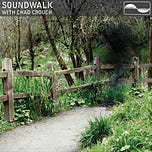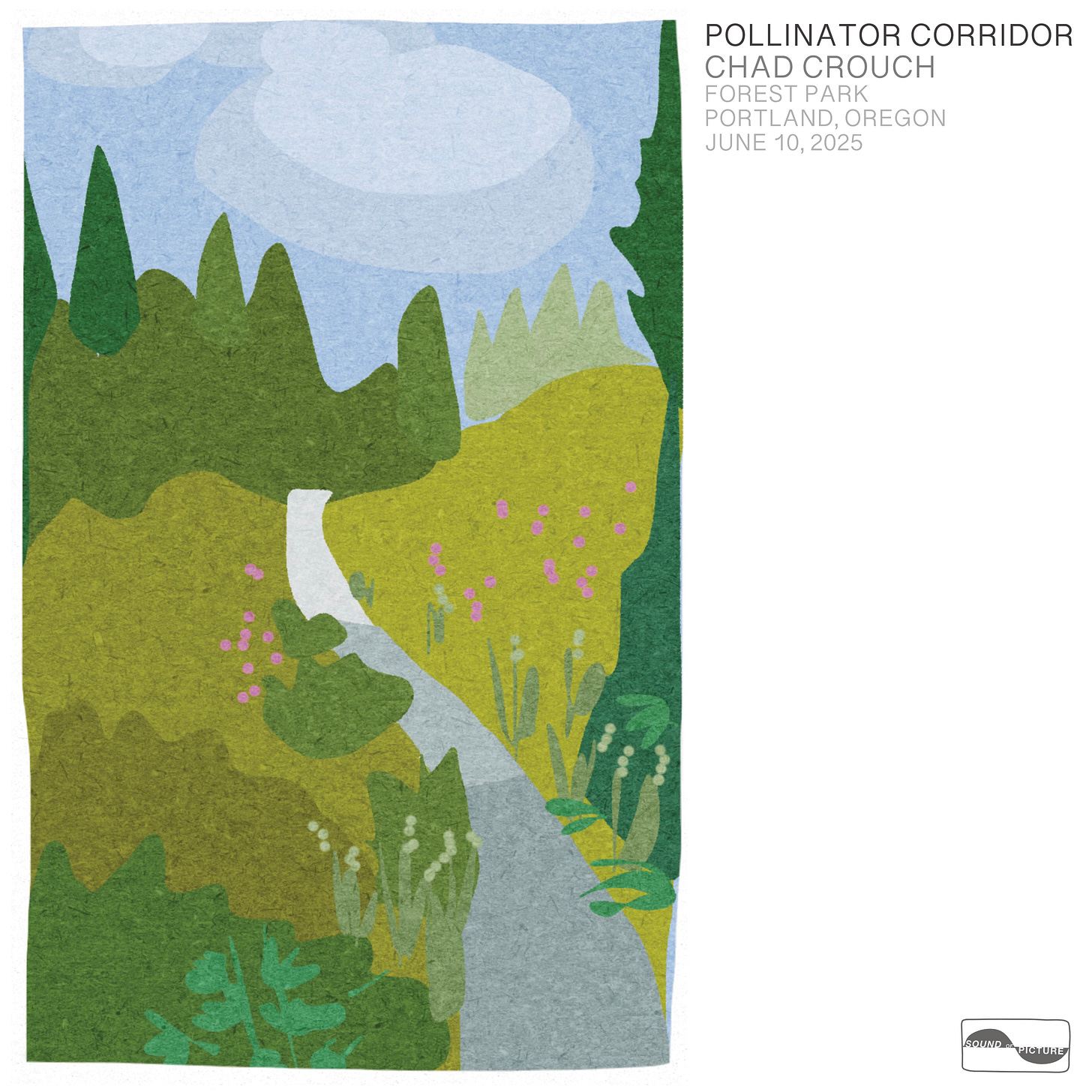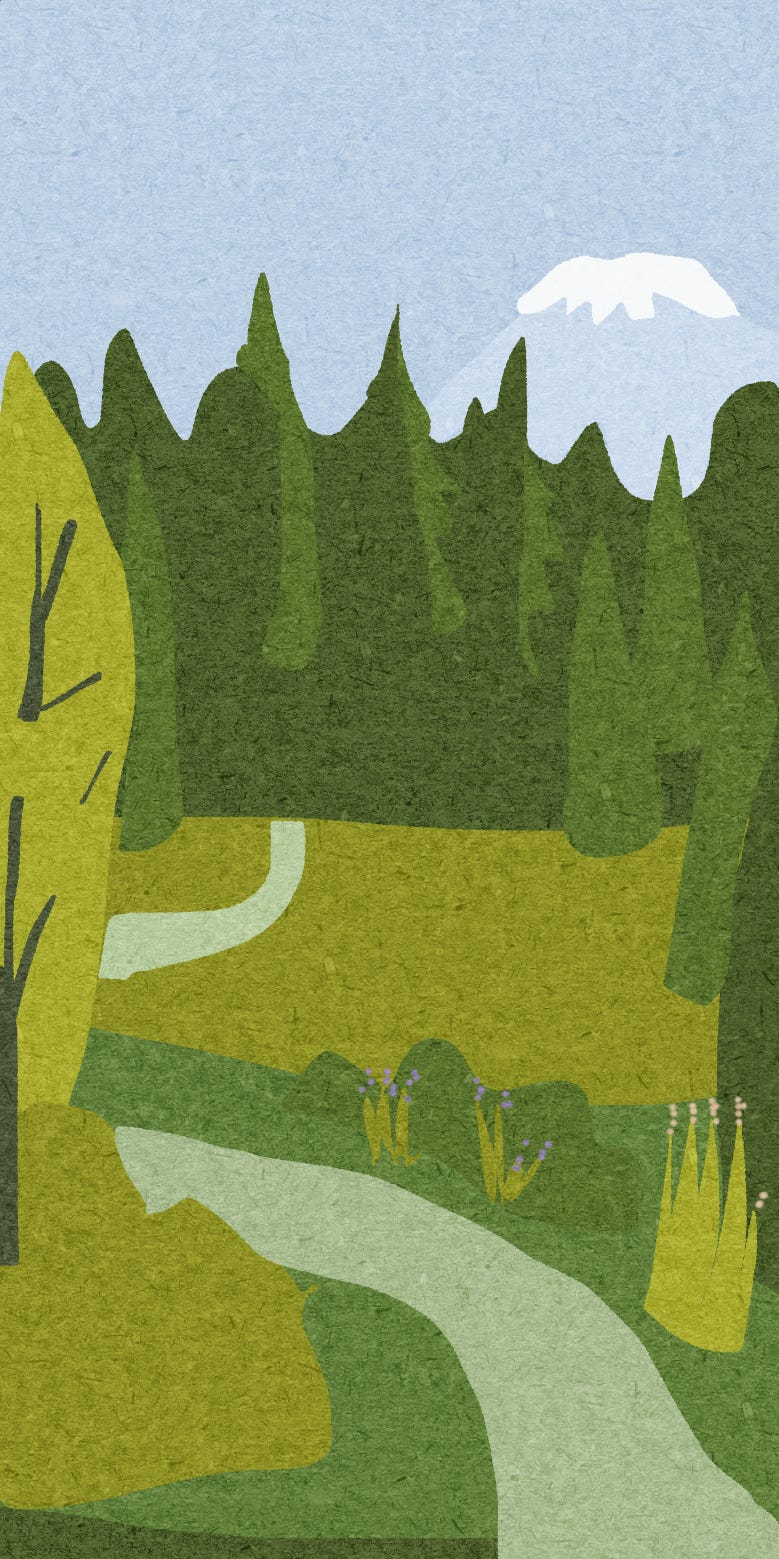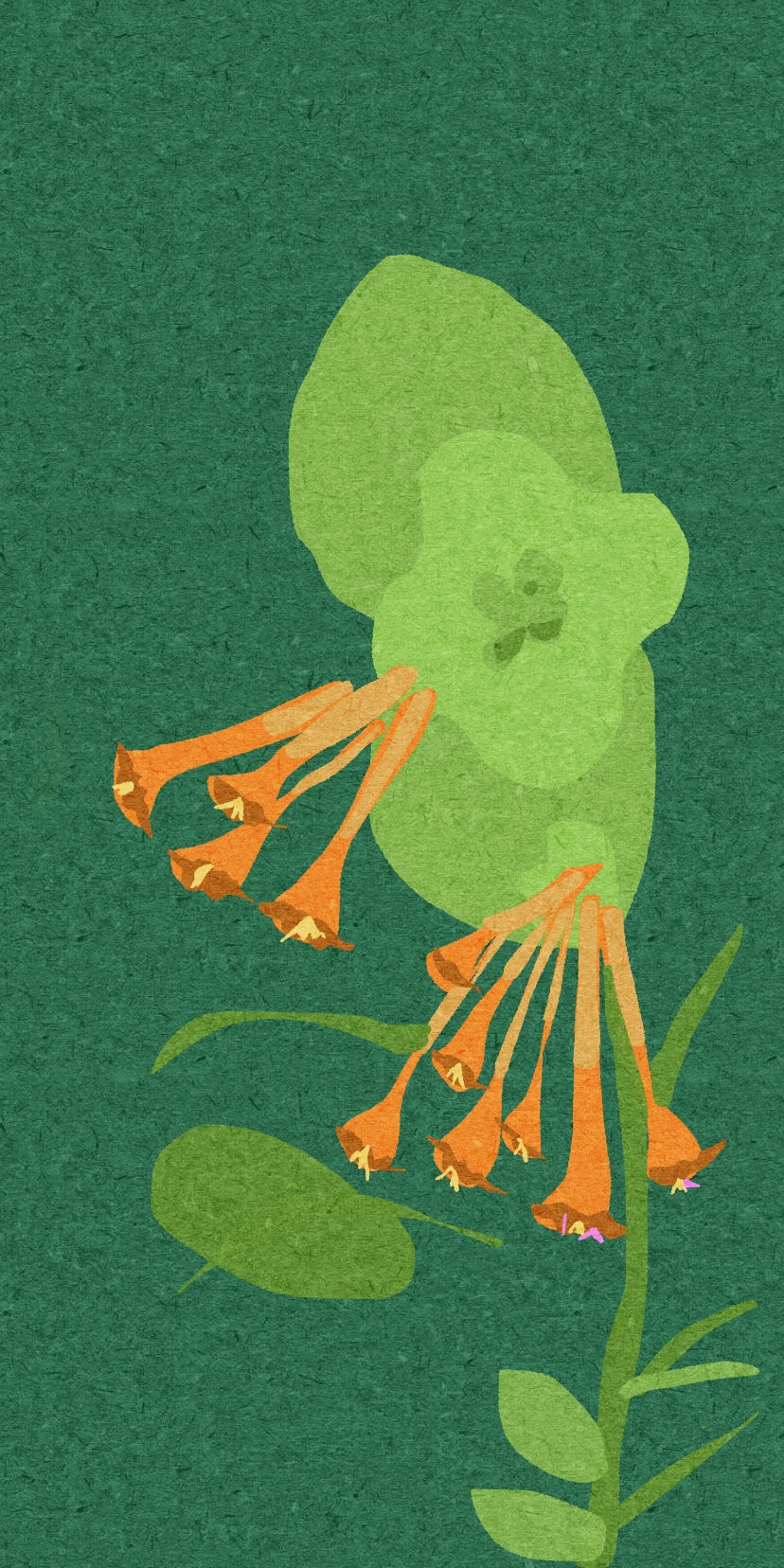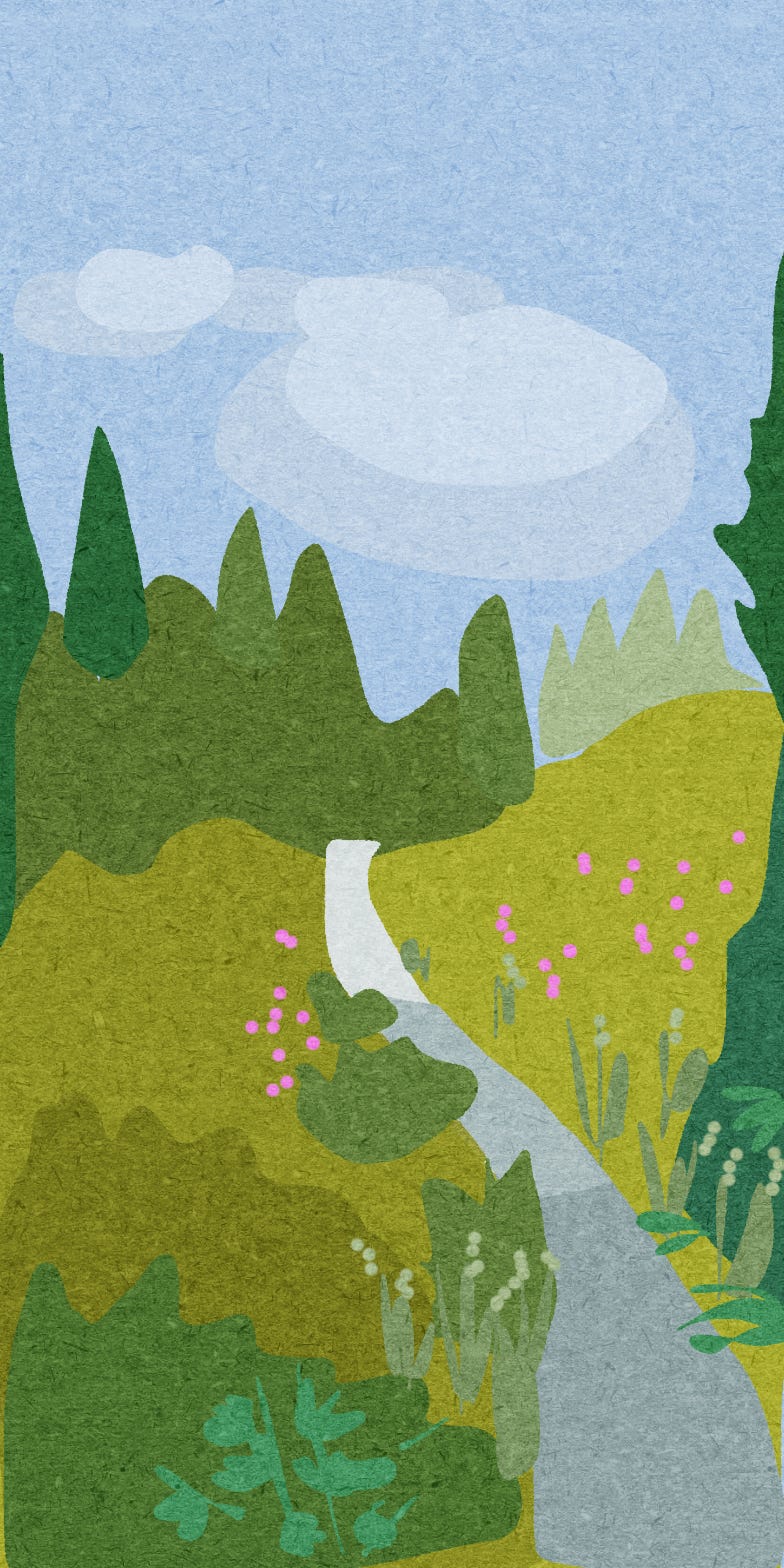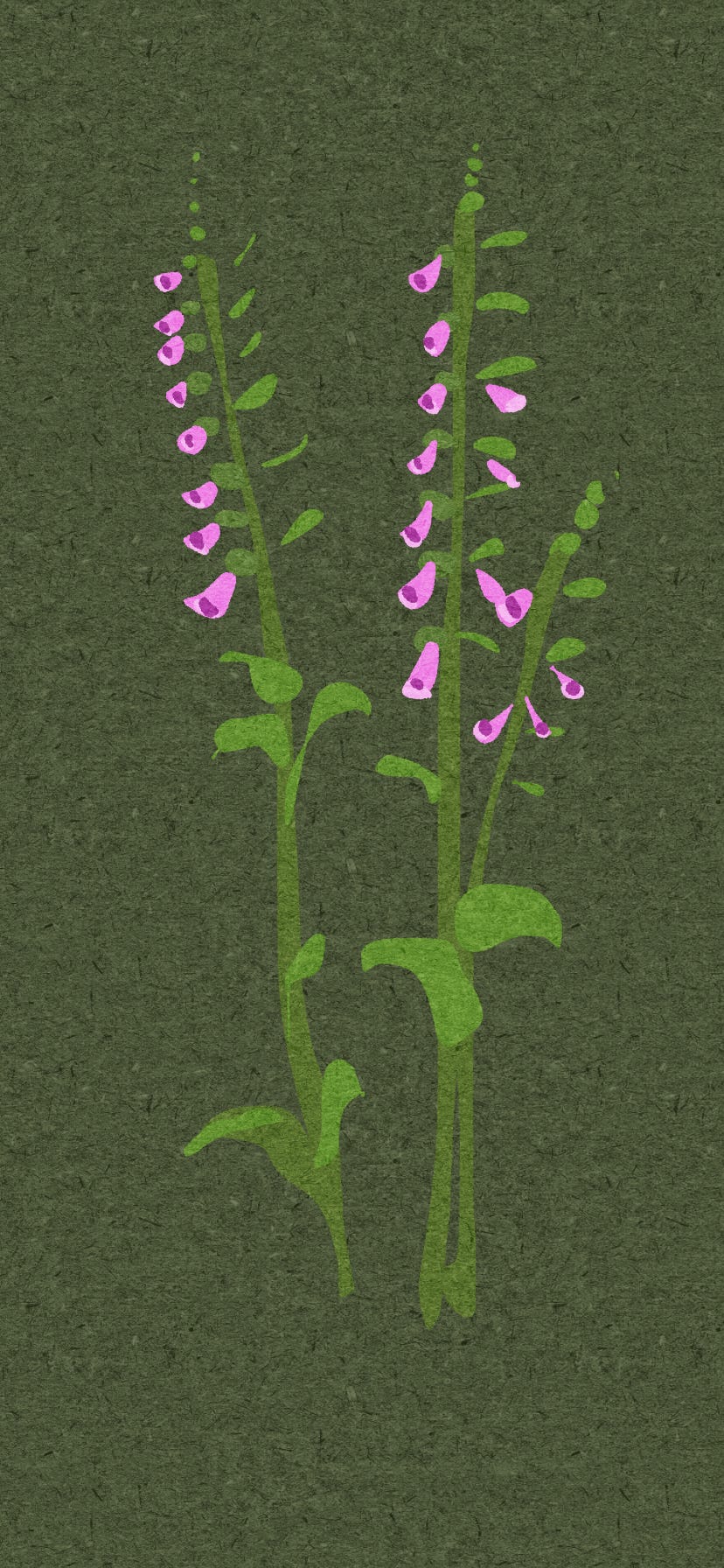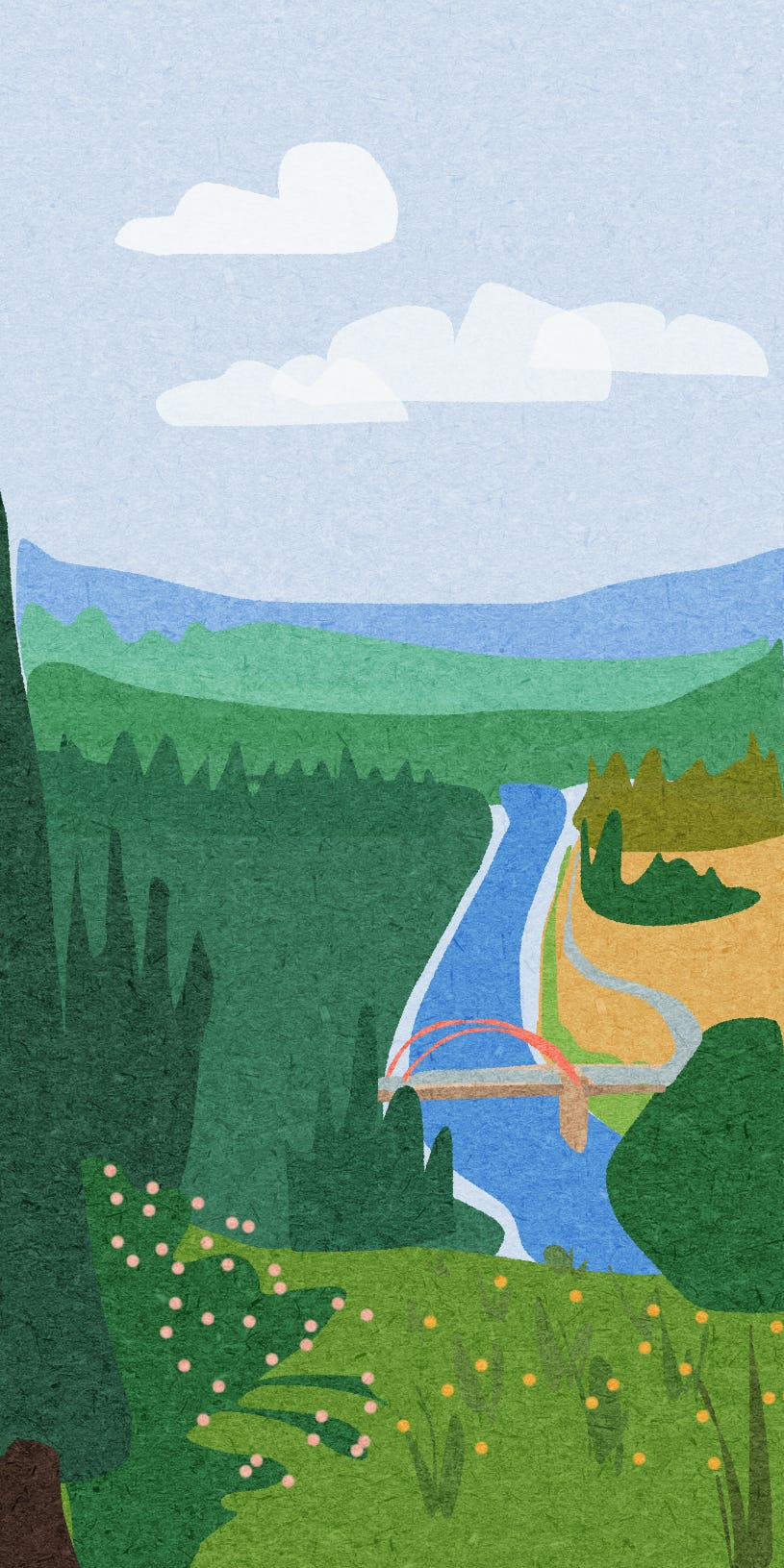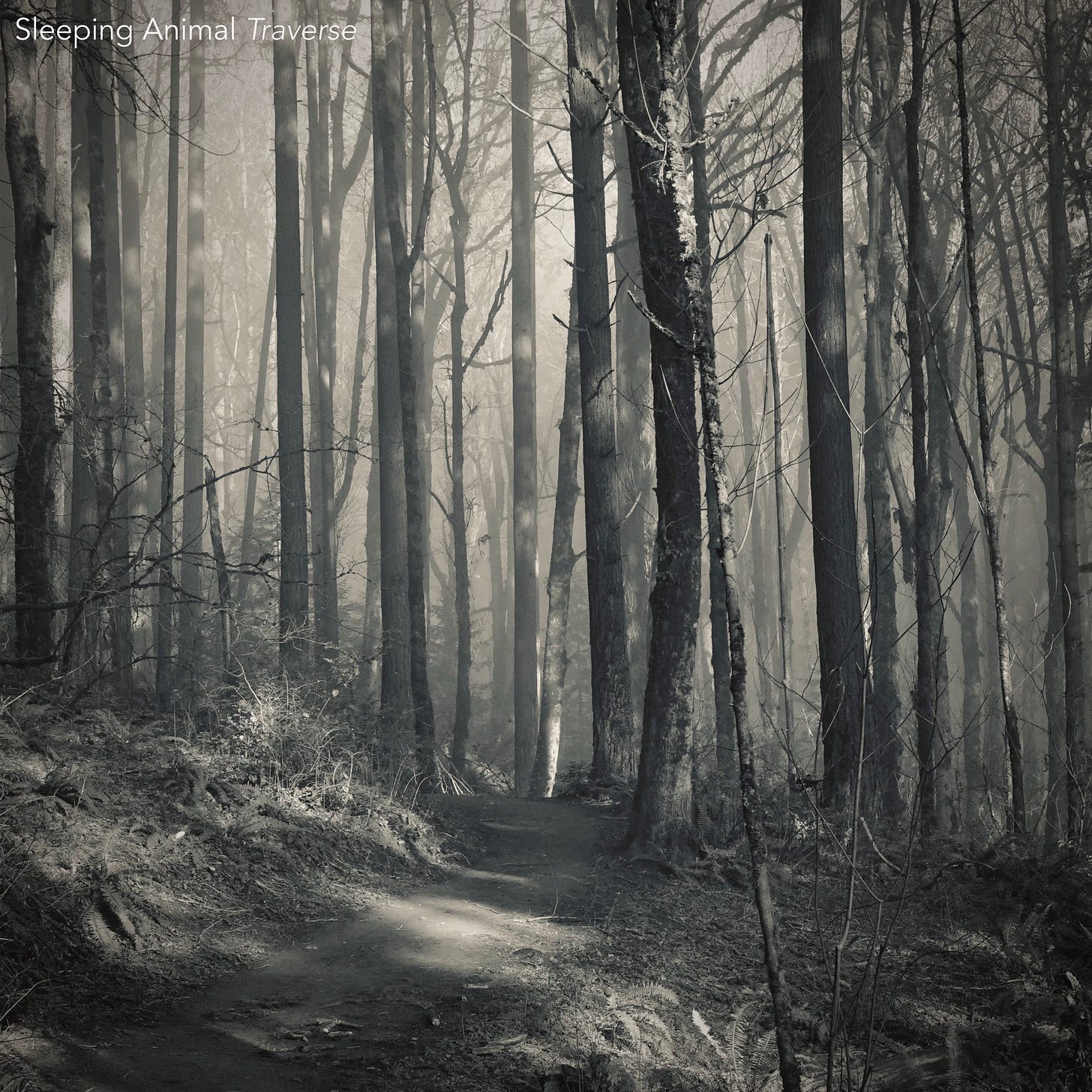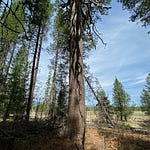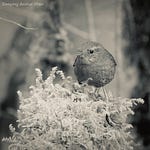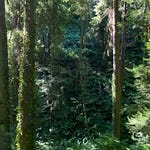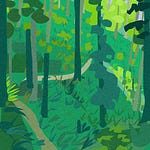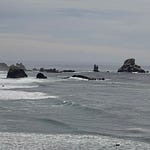I like to work in batches. Pollinator Corridor can be filed under two batches: 1) Forest Park and 2) plein air soundwalks.
So Forest Park is self explanatory, but could use some contextualizing, which I’ll get into shortly. The plein air soundwalks batch is still taking shape. Basically it’s just me recording and sketching—like I said last time—offering a little twist on my Soundwalk formula. One little experiment I did on this particular day was to make some botanical sketches.
For being in Forest Park, you might notice on this cover that the view here isn’t thickly forested:
This is the view looking back up the hill on BPA road, where a swath of forestland was removed long ago to accommodate the high voltage power lines that run up and over the Tualatin Mountains here on the north end of the 5000 acre wooded park. The gravel and dirt lane is maintained for power line inspection and maintenance purposes, while serving dual purpose as a multi-use trail connecting the trails that intersect it.
It’s a distinct habitat in Forest Park; an edge land where grasses, berries and wildflowers grow, attracting some different animal species than the forest interior. Portland Parks & Rec. calls this a Pollinator Corridor. If you’re patient, you’ll see and hear these visitors: the migratory Rufous Hummingbird with its little toy motorcycle sound; berry-eating songbirds like the Black-headed Grosbeak; insects like bumble bees, and Western Tiger Swallowtail butterflies; and deer or sometimes elk slowly cracking through downed branches on the perimeter, coming and going.
There are few places in Forest Park that open up sufficiently to afford views of the Cascade Mountains to the west. This is one of them:
Fireweed, oceanspray, western goldenrod, and Oregon Sunshine also thrive here. Here’s a sketch of orange honeysuckle.
It’s both serene and pulsing with life.
For the score, I really leaned into the sound of the Soma Lyre “Organismic Synthesizer”. I’m using a virtual instrument playable by a midi keyboard, but the original inductive pad and knob box hardware is quite fascinating. Many electronic musicians find it unusually emotive and inspiring.
I’m also using a virtual instrument that samples the quieter timbres created by manipulating the tone bars of a 50’s / 60’s Hammond organ. I used to own a Hammond M3 organ, and my earliest musical experiments involved playing with the toggle switches and tone bars to add warm, crackly textures to my nascent experimental performances.
I didn’t reach for any Electric Piano for this one. In this way it’s crossbred with my Listening Spot ouvre, I suppose.
Reaching the end of BPA Road, the hiker is presented with a three way fork. All options are a road less travelled. Two lanes lead out to prominences topped by high voltage electric towers overlooking the Willamette River and the lower Columbia beyond. The other lane plunges down to Hwy 30 below, and is prone to overgrowth. Here’s the view from the northernmost point. It’s very peaceful place with a meadowy feel, and a nice view of the Multnomah Channel and the Sauvie Island Bridge:
Thank you, as always, for joining me here. I hope you enjoy Pollinator Corridor. It’s available on all music streaming services today, September 19th, 2025.
Also, last week I released another instrumental EP under the pseudonym Sleeping Animal. So if you’re in the mood for some impressionistic electric piano-centered music, I’ve got you covered there too. That one is called Traverse, also available on all music streaming services.

